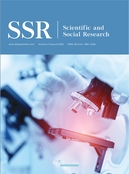Abstract
Since 2014, when the concept of coordinated development of the Beijing-Tianjin-Hebei (BTH) region was first proposed, BTH cooperative development and the co-construction of three regional city clusters as a major national development strategy have made great achievements in top-level design, industrial docking, and ecological environment. Using the literature review method, this paper summarizes and analyze the development concept, the direction of talent flow, the industrial situation, and its deficiencies in resource flow and education development in the coordinated development of the BTH region. The coordinated development of the BTH region in 2035, is believed to have improved in the sharing of regional resources, further narrowed the development gap among the three regions, and created a new pattern of BTH cooperative development, with a world-class city cluster in the BTH region.
References
Sun J, Li J, 2015, Influencing Factors and Future Prospects of Beijing-Tianjin-Hebei Synergistic Development, Hebei. Academic Journal, 35(4): 137-142.
Wu S, Jing H, Chen Y, 2019, “Chairman’s Guidance on the Synergistic Development of Beijing, Tianjin and Hebei.” Party Literature, 2019(03): 37-44.
Liang Y, Yang X, 2015, “Research on the Development History and Current Situation of the Regional Economic Integration of Beijing, Tianjin, and Hebei,” Journal of Taiyuan City Vocational and Technical College, 2015(06): 165-166.
Yuan S, Shen Z, Gao P, 2015, “The Course of the Collaborative Development of Beijing-Tianjin-Hebei Region Looking Back, Dilemma Analysis, and Countermeasures Exploration.” Industrial Technology and Vocational Education, 13(02): 66-69.
Lu D, 2015, “Functional Positioning and Synergistic Development of Beijing-Tianjin-Hebei City Cluster.” Progress in Geographical Sciences, 34(03): 265-270.
Wei L, 2016, “The Inspiration of Marx’s Theory of Division of Labor and Collaboration on the Collaborative Development of Industry: Taking Beijing-Tianjin-Hebei Region as an Example.” Learning Forum, 32(04): 32-37.
He K, 2021, “Research on the Factors Influencing the Development of Tertiary Industry in Beijing in the Context of Beijing-Tianjin-Hebei Integration.” Modern Business, 2021(24): 89-91.
Zhao Y, 2021, “Review and Prospect of the Synergistic Development of Beijing-Tianjin-Hebei Industries (2014-2020).” China Economic and Trade Journal, 2021(01): 58-62.
Zhou H, “Beijing-Tianjin-Hebei Education Collaborative Development Work Promotion Meeting Held in Xiongan New Area,” In China Education News. http://www.jyb.cn/rmtzcg/xwy/wzxw/202110/t20211021_629849.html.2021-10-21
Feng Y, Zhao X, 2021, “Research on the Construction of Provincial “Double First-Class” Universities in the Post-Popularization Era: The Case of Hebei Province in the Collaborative Development of Beijing, Tianjin, and Hebei.” Journal of Hebei Normal University (Education Science Edition), 23(06): 35-45.
Liu Y, 2022, “Research on the Synergistic Development of Beijing-Tianjin-Hebei Industries and Integrated Development of Transportation.” Urban Architecture Space, 29(03): 39-41.
